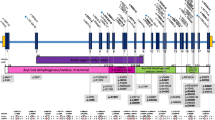Abstract
An impairment of mitochondrial function may contribute to the pathophysiology of myotonic dystrophy (MyD). Coenzyme Q10 (CoQ10) deficiency has been previously observed, even if in an restricted sample of patients. The aim of this investigation was to obtain more information about coenzyme Q10 and its relationships to the aerobic metabolism in a group of MyD patients. Serum CoQ10 appeared significantly reduced with respect to normal controls: 0.93±0.22 vs. 1.58±0.28 μg/ml (p<0.05). Moreover, the results demonstrated an inverse tendency between CoQ10 levels and the CTG expansion degree. Basal blood lactate levels were significantly higher than controls (p<0.05). A borderline inverse correlation between CoQ10 and lactate, corresponding to lactate threshold, was found. These data suggest a possible role of CoQ10 in the pathogenesis of MyD, which may be mediated by mechanisms of cellular damage common to the oxidative pathway. Therapeutic strategies may be devised by virtue of this rationale.
Similar content being viewed by others
Author information
Authors and Affiliations
Rights and permissions
About this article
Cite this article
Tedeschi, D., Lombardi, V., Mancuso, M. et al. Potential involvement of ubiquinone in myotonic dystrophy pathophysiology: new diagnostic approaches for new rationale therapeutics. Neurol Sci 21 (Suppl 3), S979–S980 (2000). https://doi.org/10.1007/s100720070014
Issue Date:
DOI: https://doi.org/10.1007/s100720070014




